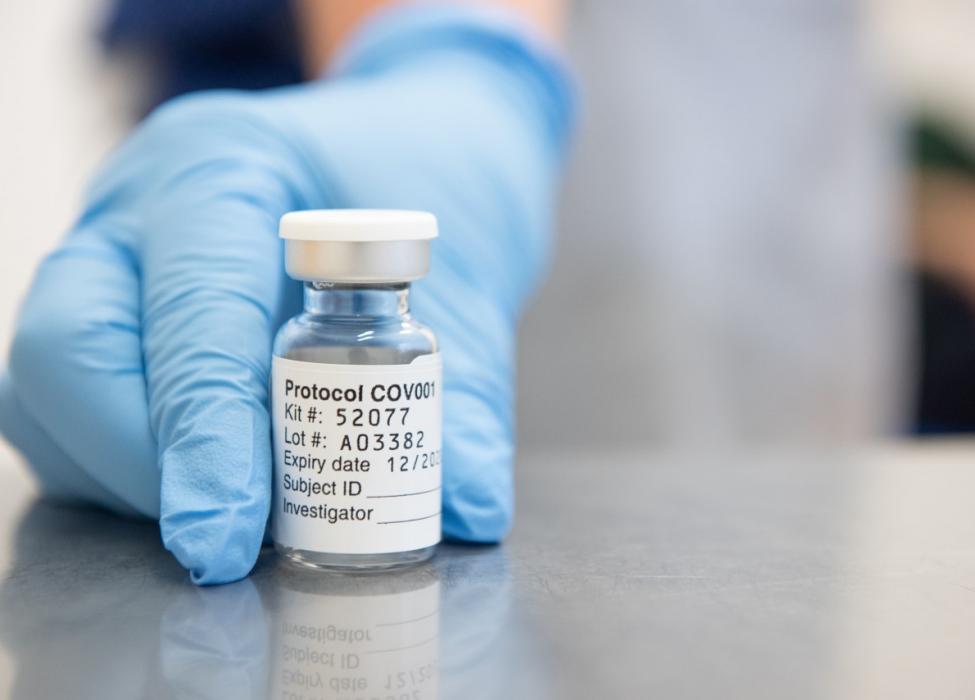
Photo: John Cairns/Jenner Insitute
COVID-19 vaccine programmes are expected to cost low income countries an additional 56.6% on health budgets, compared with just 0.8% on high income countries’ health expenditure, according to new data from the United Nations Development Programme (UNDP), the World Health Organisation (WHO) and the University of Oxford.
According to the research, COVID-19 vaccine inequity will have a lasting and profound impact on socio-economic recovery in low- and lower-middle income countries, unless there is urgent action to boost supply and make vaccines affordable and accessible to everyone.
With the current cost of vaccines calculated at an average US$15.80, and without immediate global financial support, low-income countries are forecast to see health costs soar by more than half, to vaccinate fully a target of 70% of their populations. But high-income countries would have to increase spending by just 0.8 percent to achieve the same results. This would account for half of low-income countries' projected GDP growth in 2021, against 0.2% for high-income countries.
These insights come from the Global Dashboard on Vaccine Equity, a joint initiative from UNDP, WHO and Oxford's Blavatnik School of Government, which combines the latest COVID-19 vaccination information with the most recent socio-economic data. It illustrates why vaccine equity is not only critical to saving lives but also to driving a fairer and faster recovery from the pandemic.
The data provided by Oxford is part of the Blavatnik School’s Oxford COVID-19 Government Response Tracker, which tracks and compares policy responses around the world. The Global Dashboard on Vaccine Equity currently includes Oxford data on international support (announced offers of COVID-19 related aid spending to other countries), investment in vaccines (announced public spending on COVID-19 vaccine development) and vaccination policy (policies for vaccine delivery for different groups).
“Closing the vaccine gap is required to put this pandemic behind us. The dashboard can help scale up and accelerate global delivery of vaccines by providing accurate, up-to-date information on not just how many vaccines have been given, but also the policies and mechanisms through which we get them into arms,” said Thomas Hale, Associate Professor of Global Public Policy at the Blavatnik School.
According to the new Dashboard and analysis on per capita GDP growth rates from the World Economic Outlook, richer countries are projected to vaccinate quicker and recover economically quicker from COVID-19, while poorer countries haven’t even been able to vaccinate their health workers and most at-risk population and may not achieve pre-COVID-19 levels of growth until 2024. Meanwhile, Delta and other variants are driving some countries to reinstate strict public health social measures, further worsening health, social and economic impacts for vulnerable and marginalised people.
“In some low- and middle-income countries, less than 1 per cent of the population is vaccinated – this is contributing to a two-track recovery from the COVID-19 pandemic”, said UNDP Administrator, Achim Steiner. “It’s time for swift, collective action – this new COVID-19 Vaccine Equity Dashboard will provide Governments, policymakers and international organisations with unique insights to accelerate the global delivery of vaccines and mitigate the devastating socio-economic impacts of the pandemic.”
“Vaccine inequity is the world’s biggest obstacle to ending this pandemic and recovering from COVID-19,” said Dr Tedros Adhanom Ghebreyesus, Director-General of the World Health Organization. “Economically, epidemiologically and morally, it is in all countries' best interest to use the latest available data to make lifesaving vaccines available to all.”
The Global Dashboard, which builds on data from multiple entities including the IMF, World Bank, UNICEF and Gavi, will be updated in real-time as new data becomes available, filling a critical gap to help guide the international community's understanding of what can be done to achieve vaccine equity. Users are able and encouraged to download all data sets in full from the website.



